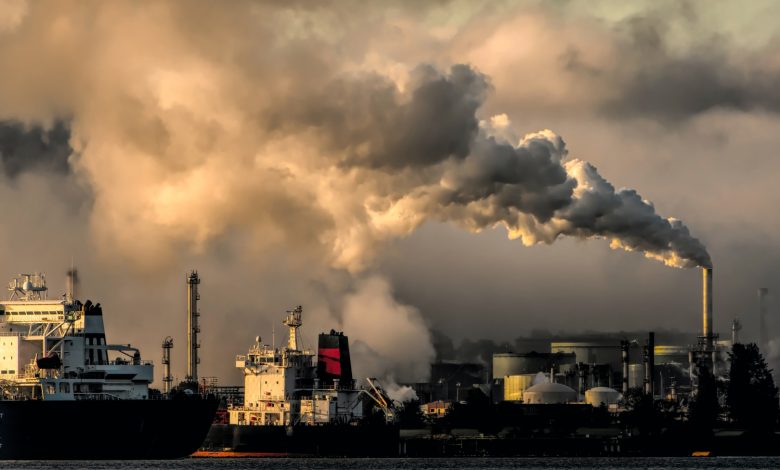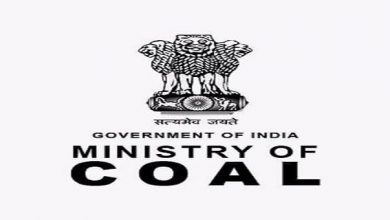Most Global Cities Far Exceed Air Pollution Guidelines, Posing Serious Health Risks
This report provides a detailed analysis of air pollution and global health effects for more than 7,000 cities around the world

A New comprehensive report of SOGA : State of global Air , details two major air pollutants in more than 7,000 cities and related health impacts .The world’s biggest cities and urban areas face some of the worst air quality on the planet, according to a new report published by the U.S.-based research organization Health Effects Institute (HEI).
This new report, Air Quality and Health in Cities, released by HEI’s State of Global Air Initiative, provides a comprehensive and detailed analysis of air pollution and global health effects for more than 7,000 cities around the world, focusing on two of the most harmful pollutants; fine particulate matter (PM2.5) and nitrogen dioxide (NO2).
In 2019, 1.7 million deaths linked to PM2.5 exposure occurred in the 7,239 cities included in the analysis, with cities in Asia, Africa, and Eastern and Central Europe seeing the greatest health impacts.
By the year 2050, as much as 68% of the world’s population is expected to live in urban areas. This rapid
urbanization places the world’s top cities at the forefront in the battle to reduce the health effects of air
pollution, especially in low and middle-income countries.
The report, using data from 2010 to 2019, found that global patterns for exposures to the two key air
pollutants are strikingly different. While exposures to fine particulate, or PM2.5 pollution tend to be higher
in cities located in low- and middle-income countries, exposure to nitrogen dioxide, or NO2, is high
across cities in high-income as well as low- and middle-income countries.

Figure: The top 10 most polluted cities for both PM2.5 and NO2, among most populated cities. WHO Air Quality Guidelines are 5 μg/m3 or PM2.5 and 10 μg/m3 for NO2.
NO2 comes mainly from the burning of fuels often in older vehicles, power plants, industrial facilities, and residential cooking and heating. As city residents tend to live closer to busy roads with dense traffic, they are often exposed to higher NO2 pollution than residents of rural areas. In 2019, 86% of the more than 7,000 cities included in this report exceeded the WHO’s 10 μg/m3 guideline for NO2, impacting about 2.6 billion people.
While PM2.5 pollution tends to get more attention on known hotspots around the world, less data has been available for NO2 at this global scale. Dr. Susan Anenberg of George Washington University, one of the project collaborators, said, “Since most cities around the world have no ground-based air quality monitoring in place, estimates of particulate and
gas pollution levels can be used to plan air quality management approaches that ensure the air is clean and safe to breathe.”
The report also highlights data gaps in low- and middle-income nations, a key aspect to understanding and addressing the health effects of air pollution. According to the WHO’s Air Quality Database, only 117 nations currently have ground-level monitoring systems to track PM2.5, and only 74 nations are monitoring NO2 levels. Strategic investments in ground-level air quality monitoring systems and expanded use of satellites and other emerging technologies in targeted regions can provide critical first steps toward cleaner air. The report combined ground-based air quality data with satellites and models to produce air quality estimates for cities around the world.
In conjunction with the report, HEI also launched new online interactive maps and data apps that allow users to see air pollution data and health impacts at the city level. Breathing even low levels of pollution over time can produce a myriad of health effects, including reduced life expectancy, missed school and work, chronic illnesses, and even death, putting enormous strains on communities and economies around the world. Worldwide, air pollution is responsible for one in nine deaths, accounting for 6.7 million deaths in 2019, with particularly strong impacts on the young, the elderly, and those with chronic respiratory and heart diseases.
TARGETED ACTIONS FOR PROGRESS
As global urbanization continues to grow, air pollution will continue to pose significant problems, especially in cities with fewer resources. But some cities are seeing success as they address their pollution problems head on. In Europe, for example, more than 300 cities have created low-emission zones (LEZs) for vehicles, generating declines in traffic air pollution. Other cities are establishing or expanding strict clean air policies that target vehicle fuel efficiency and decreased emissions from coal-fired power plants.
In response to past and continuing high levels of air pollution, Beijing, China has over the past ten years implemented rigorous controls over coal-fired power plants, while also setting stringent vehicle emission and fuel quality standards to curb traffic-related pollution. The city also increased its air monitoring stations from 35 in 2013 to more than 1,000 in 2019, documenting a 36% drop in the city’s annual average PM2.5 level in just five years. Of the top 20 cities showing the steepest declines in NO2 exposure over the last decade, 18 are in China. Despite these improvements, Beijing still features among the top 20 most polluted cities for both PM2.5 and NO2.
“As cities around the world rapidly grow, the impacts of air pollution on residents’ health are also expected to increase, underscoring the importance of early interventions to reduce exposures and protect public health,” said Pallavi Pant, HEI Senior Scientist who oversaw the report’s publication.
The report was produced by the State of Global Air Initiative, a collaboration between the Health Effects Institute and the Institute for Health Metrics and Evaluation’s Global Burden of Disease project.
The writer of this article is Dr. Seema Javed, a known Environmentalist, Journalist and Communications Expert




